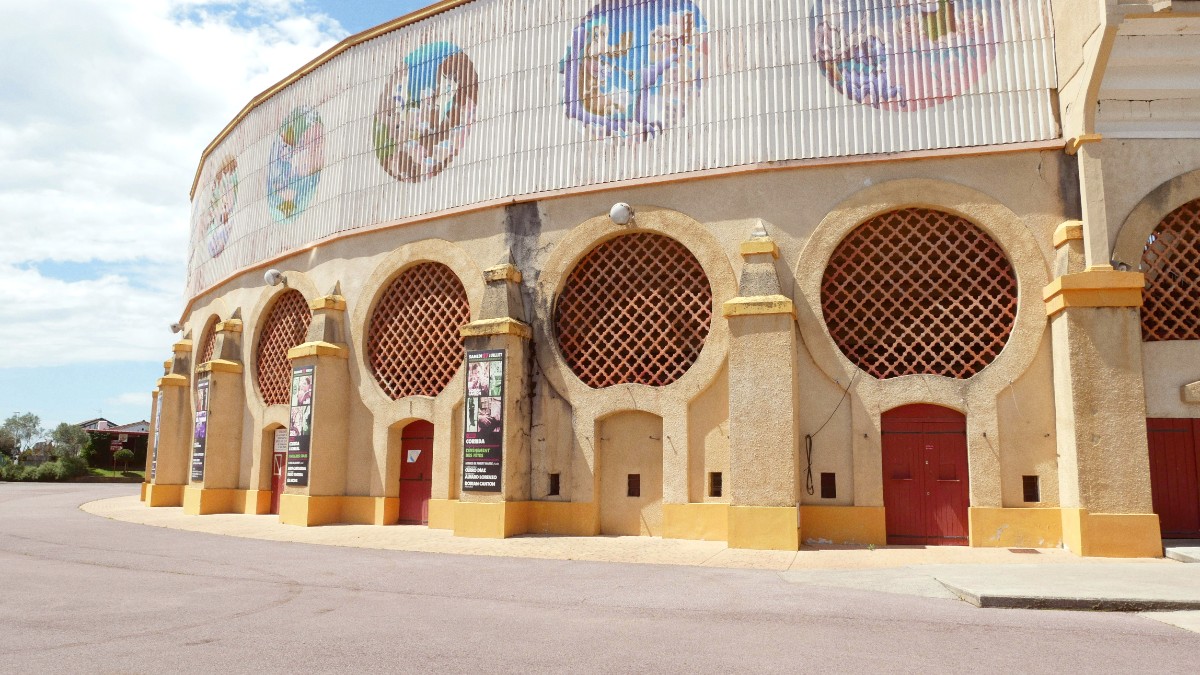
Southwestern France, France
Bayonne is not just a stop along the way; it is a destination with its own compelling story. Its narrow streets, colorful half-timbered houses, and impressive fortifications tell tales of centuries past. The city’s identity firmly roots itself in its Basque heritage, evident in the language, cuisine, and lively cultural events that fill its calendar. Visitors often discover a city that rewards exploration, offering surprises around every corner. From the aroma of world-renowned chocolate to the savory taste of its famous ham, Bayonne captivates all the senses. Plan a trip to Bayonne for a rewarding journey into the heart of the French Basque Country.
Bayonne offers many experiences, whether you prefer wandering through historical sites, sampling regional delicacies, or simply soaking in the ambiance of a French city with a Basque soul. Each bridge, each alleyway, and each square uncovers another layer of Bayonne's character.
Bayonne attracts visitors with its blend of urban sophistication and traditional roots. It presents a calm alternative to busier coastal towns while keeping you close to all the regional attractions. The city provides a base for exploring the wider Basque Country, from the Pyrenees mountains to the Atlantic coast. Its location makes it a starting point for many adventures, whether you seek outdoor activities or cultural discoveries.
Bayonne sits in the Southwest of France, specifically within the Nouvelle-Aquitaine region. It serves as the capital of the French Basque Country, known as the Northern Basque Country or Iparralde. This location positions it strategically close to the Spanish border, about 30 kilometers (19 miles) north of the Pyrenees mountains and just a few kilometers inland from the Atlantic Ocean. Two rivers, the Nive and the Adour, meet in Bayonne before flowing into the Atlantic. The city's historic core largely developed on the banks of the Nive, while the Adour, a wider river, serves as a maritime gateway.
The confluence of the Nive and Adour rivers divides Bayonne into distinct areas. Grand Bayonne, the oldest part of the city, lies on the left bank of the Nive. It houses the cathedral and medieval fortifications. The Saint-Esprit quarter lies north of the Adour river, offering different perspectives and connecting the city to the train station. This network of rivers and bridges creates a scenic and navigable urban landscape. The rivers historically contributed to both defense and trade routes, connecting Bayonne to the sea and inland regions.
Westward, find wide, sandy beaches of Anglet and Biarritz, popular for surfing and relaxation.
South and east, landscape transitions to green, rolling Pyrenees foothills.
Proximity to both mountains and sea means easy access for diverse activities.
Morning on a beach, afternoon hiking, all within short travel.
Rich soil and temperate climate support varied agriculture, defining local cuisine.
Bayonne’s geographic position also influences its climate. It experiences an oceanic climate, characterized by mild winters and warm, often humid, summers. Rainfall occurs throughout the year, though summer months generally see less precipitation. The nearby Atlantic Ocean moderates temperatures, preventing extreme cold in winter and typically very high heat in summer, though heatwaves can occur. The Pyrenees mountains also play a role, sometimes creating unique wind patterns.
Bridges connect Grand Bayonne and Petit Bayonne, making both areas easily accessible on foot. The Adour river, being wider, has fewer crossing points but offers scenic waterfront promenades.
The integration of these natural waterways into the urban fabric defines Bayonne's unique charm, offering river views and a sense of connection to the surrounding landscape.
Bayonne’s rivers and proximity to the Atlantic and Pyrenees shape its landscape, climate, and character. This integration creates a scenic and dynamic urban environment.
Bayonne boasts a rich and layered history, spanning over two millennia. Its origins trace back to Roman times, when it served as a military outpost and port named Lapurdum. The city’s strategic position, at the confluence of two rivers and close to the Atlantic coast, made it a desirable location throughout history. It served as a trading hub and a defensive stronghold for various powers.
This long and varied past shaped Bayonne's architecture, culture, and identity. Its fortifications, bridges, and religious buildings tell stories of Roman legions, medieval dukes, and periods of both prosperity and conflict.
Bayonne became an important port and fortress under English rule for over 300 years. This period saw construction of the Cathédrale Sainte-Marie and strengthening of defensive walls.
Chocolate first arrived in France through Bayonne in the 17th century. This made Bayonne the first chocolate-producing city in France.
While Bayonne became French, its people retained a strong Basque identity. The Basque language, Euskara, still receives celebration.
After its return to French control in 1451, Bayonne continued to develop as a royal city and a military stronghold, defending the border with Spain. The impressive ramparts, designed by the famed military engineer Vauban in the 17th century, are a testament to its strategic importance.
Approximately 50,000 residents in a compact, dynamic urban center.
Grand Bayonne (historical heart, cathedral), Petit Bayonne (lively, colorful houses, Basque Museum), and Saint-Esprit (residential).
Thrives on port activities, regional trade, and growing tourism, serving as a regional hub.
The Txik Txak public transport network, including electric Tram’buses, connects various neighborhoods within Bayonne and extends to nearby towns like Biarritz and Anglet. This makes exploring the wider Basque Coast straightforward without a car.
For longer distances, the Bayonne train station provides connections to major French cities and, via Hendaye, to Spain.
Bayonne Biarritz Airport (BIQ) serves as the closest air gateway, just a short bus ride from the city center.